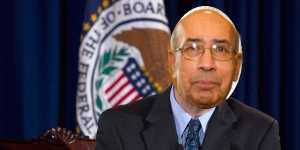[I wrote an earlier version of this post in 2011. In light of the current economic and financial turmoil, it seems all the more relevant.]
I had the great fortune and pleasure of studying under the late Kanu Chatterjee during my cardiology fellowship at the University of California San Francisco.
In the early 1970’s, Dr. Chatterjee was among the first to understand the benefits of “afterload reduction” for the treatment of congestive heart failure:
Prior to that time, giving medications that could lower the blood pressure was often seen as heretical. In fact, during the 1950’s and 1960’s, the treatment of heart failure sometimes consisted in applying measures to raise the blood pressure and increase the work of the heart.
The concept of afterload reduction introduced by Dr. Chatterjee and his colleagues was revolutionary. With such a treatment, mortality rates in heart failure were improved for the first time.
Next, Dr. Chatterjee understood early on that inotropic therapy, which stimulates the pumping action of the heart, at best provides only a short-term benefit. In the long term, it increases the risk of killing the patient:
Parenteral sympathomimetic agents, usually dobutamine, and phosphodiesterase inhibitors, usually milrinone, are used for the management of exacerbations of chronic systolic heart failure. Although hemodynamics, and occasionally clinical status, improve, such therapy is associated with increased mortality and can potentially hasten a patient’s demise.
Afterload reduction and avoidance of cardiac overstimulation are now the mainstay of therapy for congestive heart failure.
In contrast, one arm of the current paradigm for the treatment of economic failure is to implement large government spending programs that must be financed by tax increases (actual or inflationary). These programs and taxes increase afterload on the private sector of the economy.
Another arm of standard economic treatment is to apply massive doses of monetary stimulus to improve short term spending and investment. But the patient is still teetering on the brink, and threatens to collapse at any moment.
Isn’t it time to model the treatment for economic failure on the pattern found to be beneficial for for heart failure? Dr. Chatterjee would have made a great Chairman of the Federal Reserve.
May his soul rest in peace.



Certainly kudos are due to Dr. Chatterjee for his important contributions to HF treatment. In the context of HF and afterload reduction I have to mention that my old professor,Dr George Burch, was doing work and writing articles on the role of vasodilatation in intractable HF as least as early as the 1970s. He was using hexamethonium,a long forgotten ganglionic blocker,as a vasodilator in acute treatment of HF.
Burch emphasized to his residents and fellows that a basic physical exam of a HF patient could tell the physician if vasodilator treatment might be helpful. A patient with dilated neck veins and cool vasoconstricted extremities was a candidate.
As best I can remember there were no safe, oral vasodilators available in the 1970s to use and as resident I recall we were hesitant to use hexamethonium in part because it was only a short term fix. But in terms of proof of concept Burch was on to something.
The term afterload was not in vogue at the time but Burch was a very early advocate of vasodilator treatment. I have not thoroughly researched the history of vasodilator treatment but certainly Burch was in on the ground floor.
Burch,GE et al ” “New” treatment of intractable Congestive Heart Failure” AHJ 1976,June 91 (6),135
James
Thanks for the story, James, and I bet you are correct that he might have thought of the idea ahead of its publication by others.
That reminds me of a relative of ours in Beirut who was a brilliant cardiologist, professor of medicine at the local French medical school. In the 1950’s he published a case series of patients with heart failure whom he treated with high-doses of reserpine to reduce their heart rate (until they became suicidal, he told me!) and showed that many of them improved not only clinically but also with a reduction in cardiothoracic ratio on chest film. That was before there were even any effective diuretics. A version of that idea, of course, is the now standard use of beta-blockers for CHF. I have a pdf copy of that paper to show Karl Swedberg and others who published the beta-blocker studies in the 1990s if I ever have the occasion, but it’s from Annales du Coeur et des Vaissaux, the French cardiology journal, and therefore in French!
As always, there are no new ideas. You can construct humoral version of that treatment that could be consonant with Hippocratic medicine 🙂